Containers In The Fall ~ You Have Options!
Containers In The Fall ~ You Have Options!
On Cape Cod we are so fortunate that the annuals last well into October before there is a hard frost. This gives us many choices, from a total re-planting with fall selections to filling containers with spring flowering bulbs. What you choose to do depends on the type of pots you have, what you’re planning to plant, and what you want to see. Here are some options and guidelines.
Leave existing annuals but add pumpkins and gourds.
One way to quickly “fallify” a container is to place pumpkins right on top of the plants that been there all summer. As the days grow shorter, some of our annuals begin to thin out, but gourds or pumpkins fill empty spaces and add solidity, not to mention fall colors.
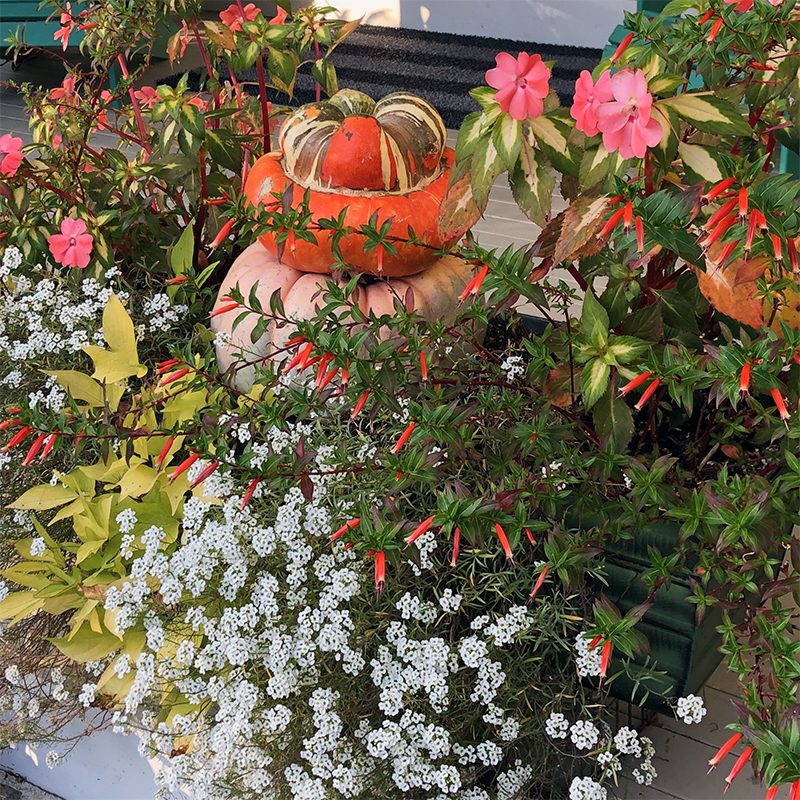
Pull summer flowers and fill your pots with fresh plants for fall.
If the plants in your pots are no longer looking their best, you can use a trowel to remove them and put autumnal selections in their place. In most cases those fall plants will only be growing in the containers through Thanksgiving, so there’s no reason to empty all of the old potting mix and replace it with new soil. Use enough fresh potting soil to cover the roots of your new plants, and wait to replace the rest later in the winter or next spring.
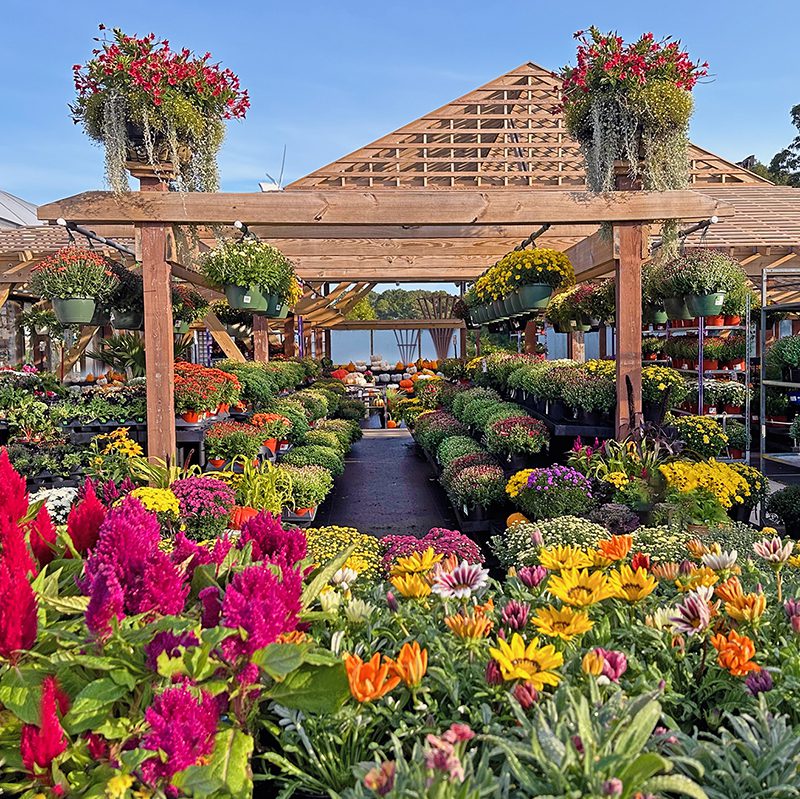
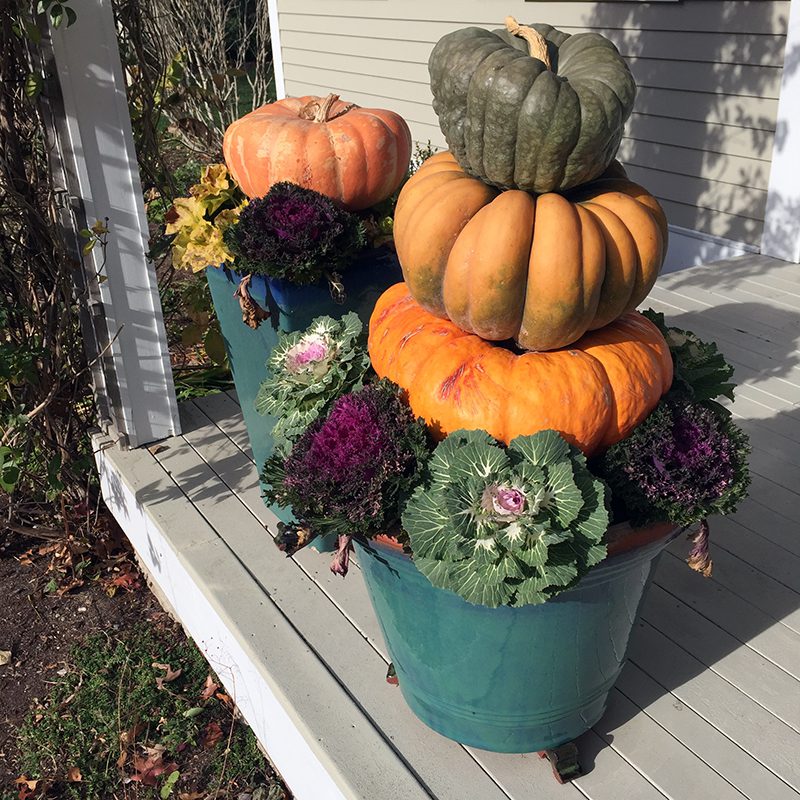
Empty clay pots for storage for the winter.
Pots that are clay can crack if they are left outside in winter weather. These should be emptied and stored in a shed or garage before mid-December. Use the old potting mix in a raised bed, spread around shrubs and perennials, or put into your compost pile.
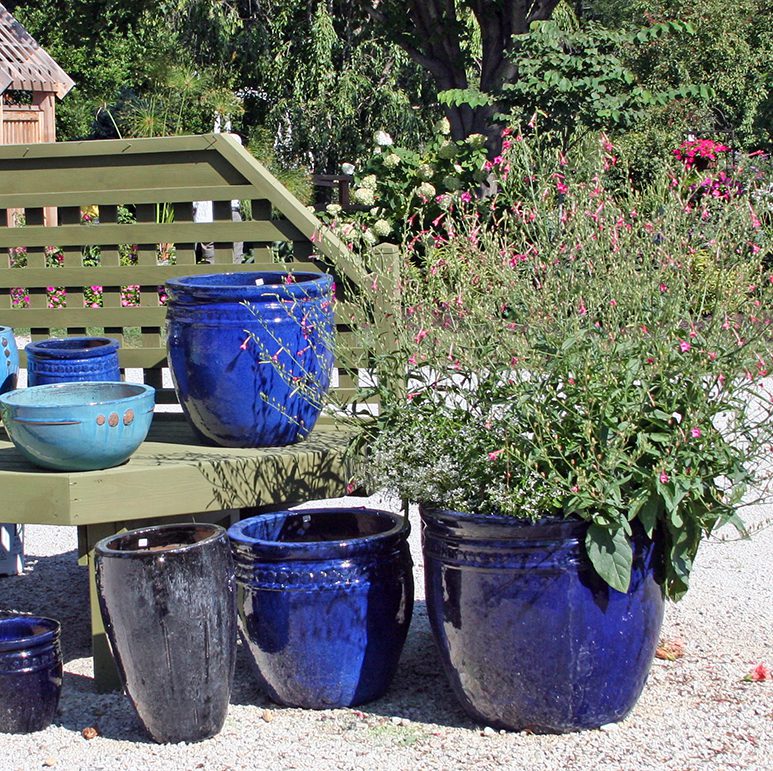
Planting bulbs for spring flowers? Use fresh potting soil.
If you have metal, wood or plastic containers that won’t crack in the winter, you can plant tulips or other spring flowering bulbs. Don’t put these in the same potting mix that filled these containers all summer, however, because the drainage won’t be good and the bulbs are likely to rot. Empty the pots or boxes and put in fresh potting soil. Add the bulbs and cover with new potting mix. After your bulbs finish flowering next spring, they can be removed and planted in the garden and that same potting mix used for summer annuals. So refreshing the potting soil in the fall means that it’s already done for next summer.
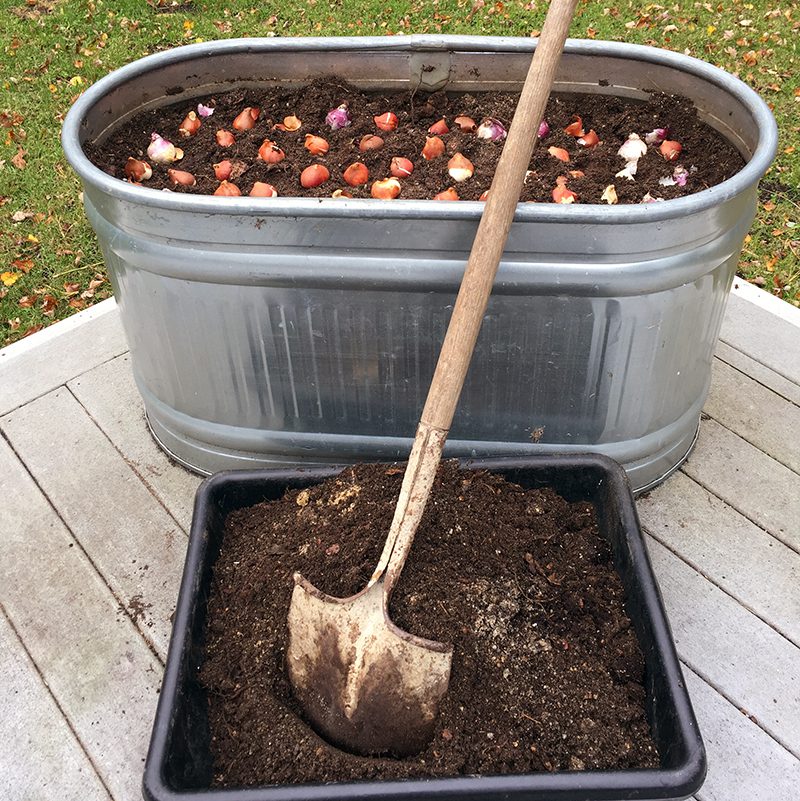
Subscribe To Our Newsletter
Sign up for our weekly email about sales and events.
